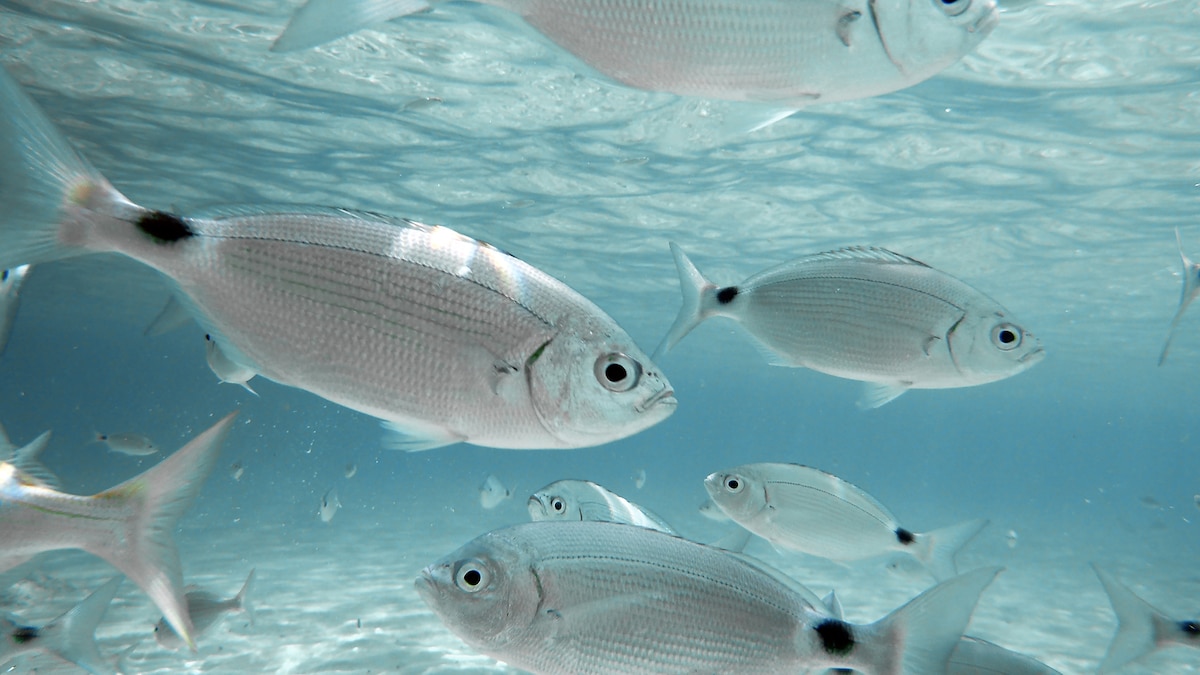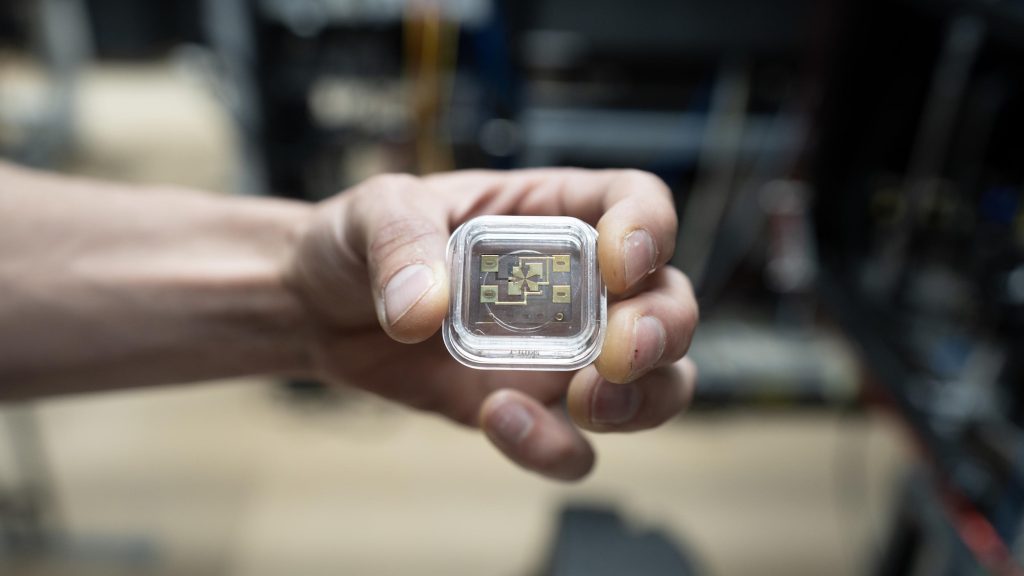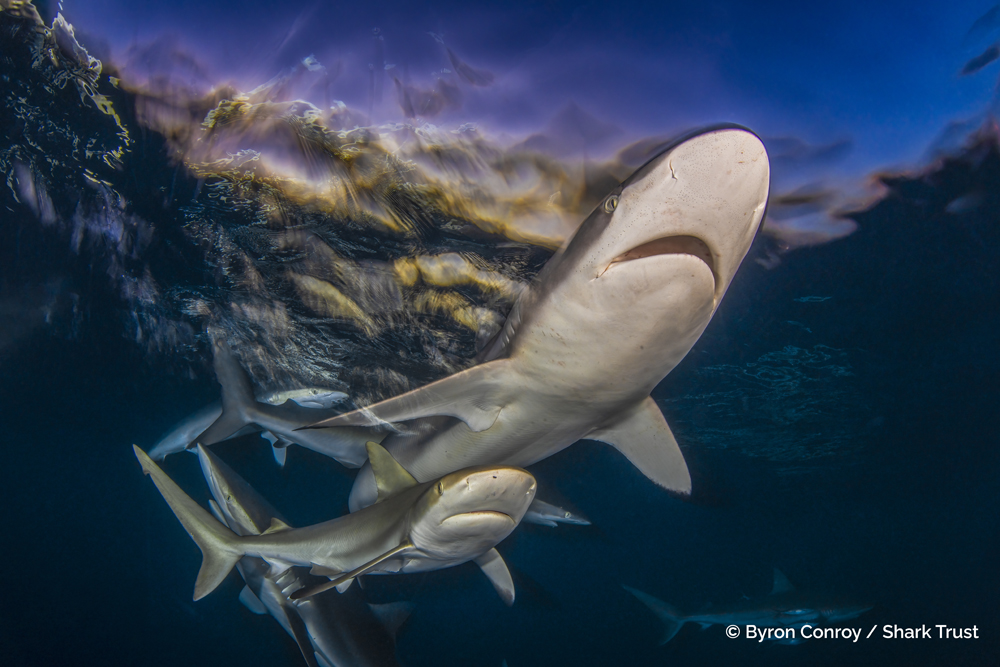Now Reading: These fish can spot their favorite divers (the ones with snacks)—here’s how
-
01
These fish can spot their favorite divers (the ones with snacks)—here’s how
These fish can spot their favorite divers (the ones with snacks)—here’s how

Several times during almost 20 years of conducting research on fish in the wild, Alex Jordan, a researcher who leads the Behavioural Evolution Lab at the Max Planck Institute of Animal Behavior, had the feeling that the fish he was studying were learning to recognize and follow him or his colleagues.
“There were a lot of times when it was obvious to us that fish were recognizing us,” he recalls.
But while scientists seemed to intuitively suspect this, no studies looked at this phenomenon in the wild.
“[Fish] are a lot more complicated than we give them credit for,” says Cait Newport, a marine biologist at Oxford University who wasn’t involved in the new research.
To test their hunch, Jordan and his colleagues traveled to the French Mediterranean island of Corsica, where they designed experiments involving two different fish species: saddled sea bream (O. melanura) and black sea bream (S. cantharus)—two common species in the Mediterranean Sea. For a month, the team conducted more than 30 dives between 13 and 26 feet deep.
The results of their study, recently published in the journal Biology Letters, suggest fish could recognize individual divers by the color of the gear, similar to how divers often recognize each other when their faces and other body parts are obscured by scuba equipment.
How scientists train fish
As a first step, a researcher and student on Jordan’s team, Katinka Soller, trained fish to follow her, conducting 23 dives over 12 days.
She did so by wearing a colorful vest and floating in place for five minutes while feeding the fish shrimp slices. Then, she swam for 160 feet in a straight direction and rewarded the fish that followed her with more food. After the 10th dive she gradually stopped feeding the fish and wearing the colorful vest. An average of 13 fish learned to follow her.
To learn whether the fish were actually recognizing a specific diver, and not just following divers in general, the team performed a second experiment, where two researchers wearing different colored diving gear entered the waters, Soller and doctoral student Maëlan Tomasek, also from Jordan’s team. Both divers floated in the same spot for three minutes before swimming in opposite directions.
At the end of the 160-foot swim, the first diver rewarded the fish with food, while the other didn’t. This portion of the experiment lasted 10 days, for a total of 5 dives.
On the first day of this experiment, the fish followed both divers, but they gradually learned to follow the researcher that rewarded them with food—suggesting that they could learn to tell the two divers apart.
You May Also Like
In the final experiment, the divers repeated the routine while wearing identical suits.
This time, the fish couldn’t recognize the diver that had been feeding them and began following both again. This suggests they used the different colors of diving gear to tell the two divers apart and follow the one that gave them food.
“You might then say, ‘well, that’s because they’re stupid fish, right? They only look at the visual appearance of the divers’,” says Jordan. But when underwater, he notes, scuba divers usually do the same thing, using the color of their gear to recognize each other.
An unresolved mystery
Jordan says fish evolved the ability to link a certain stimulus to a reward. That’s how they might be learning “to associate a particular human that they recognize through visual means with a certain outcome.”
Previous studies on fish intelligence have been mostly done in the lab, and one study published by Newport in 2018 showed that at least one species of fish could recognize 3D renderings of human faces.
Newport says the idea of testing fish intelligence in the wild, where those animals naturally live, “is actually really quite new, and [the study authors] should be commended for doing that.”
But while it’s possible that fish could learn to recognize individual humans’ traits, that’s not what this study shows, stresses Bryan Neff, a fish ecologist at the University of Western Ontario who wasn’t involved in the study.
As the researchers demonstrates, says Neff, the fish are using a visual cue, a color in the divers’ suit. “And honestly, there’s nothing particularly novel about that.” Previous research has shown that some species of fish “can pick up on color and that they have a reaction to that color,” Neff adds.
While the new study offers fresh clues on whether and how fish might recognize us, it also leaves open questions for future research.
As a next step, Jordan and his team want to test whether fish can learn to recognize human’s attributes, such as the hairs, eyes and face, which usually allow us humans “to differentiate amongst each other”.
Meanwhile, this new study could also have implications for researchers studying fish in the wild. If the animals can recognize and follow specific scientists, they might accidentally bias the results of experiments, avoiding teams that perform certain more stressful experiments, while interacting more with researchers that for example give them food rewards, says Jordan.
“We have to be really careful with how we work underwater when we realize it’s not just us observing them. It’s them observing us.”



























